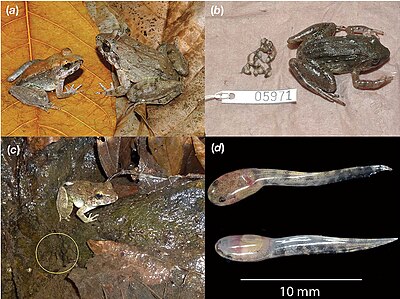
Theories upset.
From BBC News
For the first time, frogs have been seen giving birth to tadpoles.
Most frogs lay eggs and although some species give birth to froglets, newborn tadpoles are new to science.
…
Dr Jim McGuire from the University of California, Berkeley, actually thought he was holding a male frog the first time he witnessed a birth.
Nurse: Sir, please put your signature here, on the 2nd line: FATHER 😉
Well. It isn’t quite that bad, is it? It’s just that
Nearly all the world’s 6,000 frog species use external fertilisation: the female lays eggs during mating, while the male releases sperm to fertilise them.
…
This new frog is one of only 10 or 12 species that has evolved internal fertilization, and of those, it is the only one that gives birth to tadpoles, as opposed to froglets or laying fertilized eggs.”
So maybe it is not necessarily that the others couldn’t do it (apparently this amphibian can). But they don’t do it, for various reasons.
No one currently knows how the tadpoles’ parents manage to do it.
It’s not what we know about the evolution of life on Earth but what we didn’t know that will sink Darwin’s Tree of Life.
Here’s the abstract:
We describe a new species of fanged frog (Limnonectes larvaepartus) that is unique among anurans in having both internal fertilization and birth of tadpoles. The new species is endemic to Sulawesi Island, Indonesia. This is the fourth valid species of Limnonectes described from Sulawesi despite that the radiation includes at least 15 species and possibly many more. Fewer than a dozen of the 6455 species of frogs in the world are known to have internal fertilization, and of these, all but the new species either deposit fertilized eggs or give birth to froglets.
Follow UD News at Twitter!